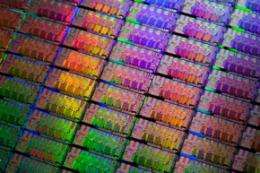Power profiles help electronics go green

(PhysOrg.com) -- New and better ways of measuring high-tech energy consumption could lead to significant environmental and economic gains, a study from The Australian National University has found.
Researchers from ANU, the University of Texas at Austin and the University of Washington have completed the first systematic profile of microprocessors – the integrated computer chips that act as a central processing unit in electronic devices like smart phones, computers and giant data centres.
Dr. Steve Blackburn from the ANU College of Engineering and Computer Science, who led the study with Professor Kathryn McKinley from the University of Texas at Austin and their students, said that the findings could help lower the energy costs of electronic devices ranging from small mobile devices, supercomputers to massive server farms.
“We looked at the power profiles of different software and different chip architectures, as well as application power, performance and energy on a wide variety of hardware. These were measurements that no one had ever looked at before. We found that different software have really different power usages. This is really important because as technology and processors are getting smaller and smaller it has stopped yielding exponential gains in power and performance.
“These findings could be used by companies like Google, Intel, Apple and Microsoft to develop software and hardware which will lower energy costs in electronic devices as well as their IT infrastructure. It could even be used to make sure that your GPS works a lot better by optimizing how often and quickly it locates you for less battery power.
“For companies which use massive data centres to run their programs and applications, there are real incentives to find ways to conserve power. It’s also beneficial for the hardware. For example, the less power a mobile phone draws from its battery, the longer the battery will last.”
Dr. Blackburn added that in the future power profiles will become a key consideration of every stage of software and hardware design.
“Today hardware and software designers have to make a trade off between performance and power in a way that they didn’t have to 10 years ago. In the past designers only optimised for performance, so if you were picking between two software algorithms, chips or devices you always picked the faster one. You wouldn’t worry about how much power it was using.
“That’s not possible today. Massive shifts in society, culture and technology over the last decade mean that everyone needs to be more energy conscious. Energy efficiency has become a priority for consumers, manufacturers and governments. Our study will mean that we are all on the right track to realising this.”
The team’s research has been invited to appear as a research highlight in the Communications of the Association for Computer Machinery. It has also been selected as one of this year’s most significant papers in computer architecture by the journal IEEE Micro.
Provided by Australian National University




















